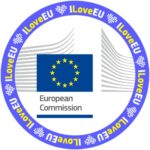Supporting Safer Internet Day banner, by saferinternetday.org
9 February 2021 marks the Safer Internet Day (SID) with actions across the globe. This 18th edition takes place under the theme “Together for a better Internet” and calls for all stakeholders to join forces in making the Internet a safer and better place for all, especially for children and young people.
What can you do on the 9th of February 2021:
- Show your support of the initiative by posting a banner on your website, using a social media cover on your Facebook, Twitter channels or use an animation, infographic and other visuals on any favourite communication channels. Check the free to use resources here and personalise them to your liking: https://www.saferinternetday.org/join
- Join a Safer Internet Day initiative in your country by checking this interactive map: https://www.saferinternetday.org/in-your-country
- Mark the calendar for 8 February 2022, when the next SID will take place and consider planning one or more actions to support it.
Here are some tips from the organisers with what all of us could do every day in order to play a part in shaping a safer and better Internet:
- Children and young people can help to create a better internet by being kind and respectful to others online, by protecting their online reputations (and those of others), and by seeking out positive opportunities to create, engage and share online.
- Parents and carers play a crucial role in empowering and supporting children to use technology responsibly, respectfully, critically and creatively, whether it is by ensuring an open dialogue with their children, educating them to use technology safely and positively, or by acting as digital role models.
- Teachers, educators and social workers can help to create a better internet by equipping their pupils and students with digital literacy skills and by developing their critical thinking skills, which will allow them to better navigate the online world. They can empower them to create their own content, make considered choices online, and can set a personal example of positive online behaviour for their pupils and students.
- Industry can help to create a better internet by creating and promoting positive content and safe services online, and by empowering users to respond to any issues by providing clear safety advice, a range of easy-to-use safety tools, and quick access to support if things do go wrong.
- Decision-makers and politicians need to provide a culture in which all of the above can function and thrive – for example, by ensuring that there are opportunities in the curriculum for children and young people to learn about online safety, ensuring that parents and carers have access to appropriate information and sources of support, and that industry is encouraged to self-regulate its content and services. They must also take the lead in governance and legislation, and ultimately ensure the safety and wellbeing of children and young people through effective child protection strategies for the digital world.
- Everyone has a responsibility to make a positive difference online. We can all promote the positive by being kind and respectful to others and by seeking out positive opportunities to create and connect. We can all respond to the negative by reporting inappropriate or illegal content and behaviour online.
———–
SID started as an initiative of the EU SafeBorders project in 2004 and taken up by the Insafe network as one of its earliest actions in 2005, Safer Internet Day has grown beyond its traditional geographic zone and is now celebrated in approximately 170 countries worldwide.
Currently, the funding is provided by the European Commission (EC) through the Connecting Europe Facility programme (CEF). Find out more about the EC’s “European Strategy for a Better Internet for Children” on the European Commission’s website: https://ec.europa.eu/digital-single-market/en/creating-better-internet-kids
Learn more about Safer Internet Day on the official website
www.saferinternetday.org





